Are you looking to add live aquarium plants to your fish tank? Consider getting floating aquarium plants.
Floater plants are low-maintenance and provide a safe and natural aquatic environment for your aquatic animals.
But what are the benefits of having floating plants in a fish tank? And how can you choose suitable floating plants for aquarium?
This guide provides answers to these questions and more.
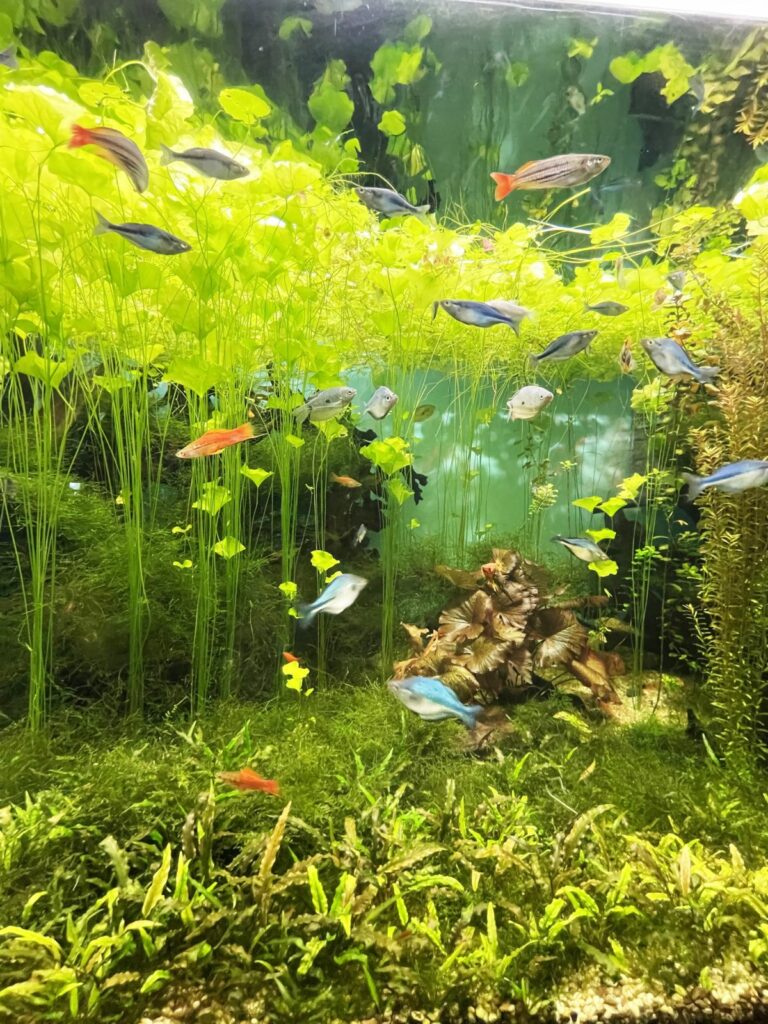
Why Should You Get Aquarium Floating Plants?
Floater plants are indeed beautiful. Your fish tank will look like the natural surface of a river, lake, or deep sea when you add floater plants.
Here are more benefits of floating fish tank plants in addition to their visual appeal.
Stabilizes Water Parameters
Floating plants are a natural way to get rid of waste and nitrates from your fish tank. These plants take in nitrate and use them as fertilizers. They filter the tank water, thereby reducing the necessity for frequent water changes.
In addition, floating plants regulate oxygen. They act as an air circulation system to generate oxygen for fish and other animals in the tank.
Provides Cover
Some fish species are shy, while others love exploring. Floating aquarium plants provide hiding and foraging spots for such fish. The cover distresses a shy fish since it offers security and comfort. Also, the floating plants replicate the natural habitat where fish hide.
Diffuses Light
Most fish species are adapted to living in water with floating plants or dense forest canopies. The vegetation in the wild helps diffuse light as it enters the water, which is exactly what floating plants do. This environment calms down fish to promote good health.
Supplements Fish Diet
Floater plants act as tasty snacks for your fish to balance their diet. Some fish species and shrimp eat algae present on a plant’s surfaces. Others are herbivores and nib on the leaves for enrichment.
How Can You Choose the Best Aquarium Floating Plants?
To get the best floating plants for aquarium, consider the following factors.
Livestock in Your Tank
The fish species and invertebrates in your tank determine the kind of floating plants you add to your tank.
For instance, the best floating aquarium plants for guppies and mollies are those with long roots since they provide sheltering places for their fry. The roots also encourage foraging among shrimp and krill.
On the other hand, if your marine animals produce a high bioload, it would be best to get a floater plant that neutralizes waste.
Tank Size
Your aquarium’s capacity also determines how many aquarium floater plants you can use. Most aquarium plants are fast-growing and will only need a few weeks to overpower the tank. But you can prevent this by purchasing only a few floating plants for your tank and then trimming or thinning them out with time.
Lighting Level
How much light do you want the floating aquarium plant to let in? Do your fish enjoy lounging in dark areas? If yes, the floating plants will provide hiding spots and improve the overall health of your fish.
However, make sure light penetrates through the floating plants if you have other bottom-dwelling plants that need sunlight.
Growth Rate
In the wild, floater plants grow at an alarming rate. It is the same when you introduce these plants into your aquarium. They grow quickly and can easily overpower your aquarium.
Therefore, ensure you learn about the plant’s growth rate before purchase.
10 Best Aquarium Floating Plants
We have compiled ten of the best floating fish tank plants to help you narrow your search.
1. Java Moss
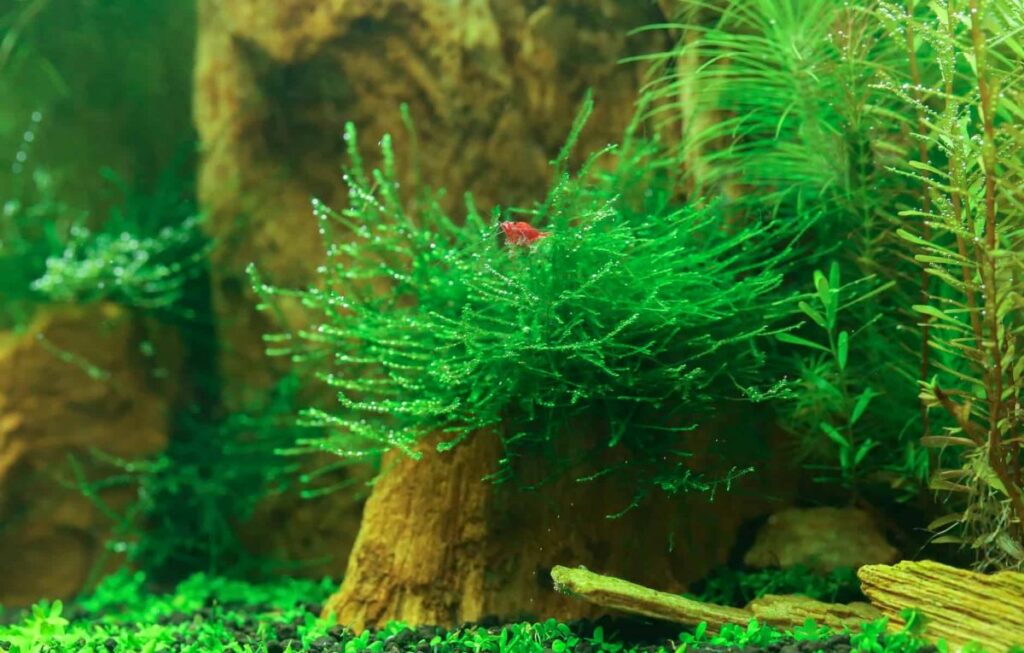
Java moss is on top of the list as our best floating aquarium plants.
It grows on rocks, driftwood, and other surfaces in the fish tank. Also, the plant floats like other floating aquarium plants if you provide an anchor. Java moss does not grow too fast or very high. So, you can maintain it however you want.
The plant is compatible with the majority of tank mates and does not need a special environment to thrive. Nevertheless, avoid exposing it to high temperatures. This floating plant provides shelter for shy, young fish or live invertebrates in the aquarium. It also hides food for foraging fish and shrimp.
2. Water Wisteria
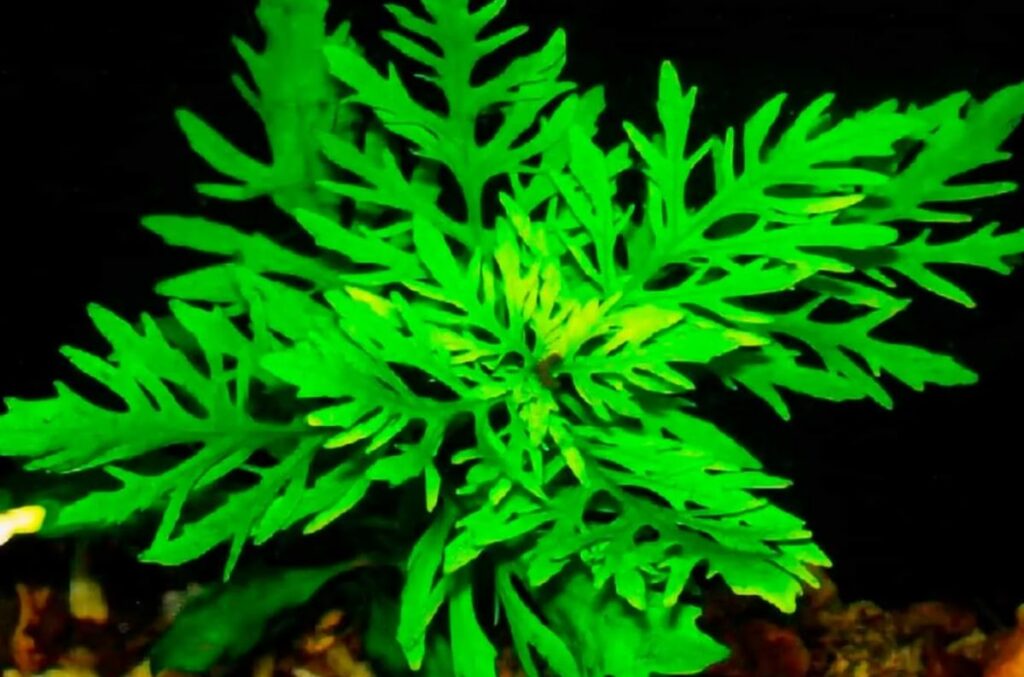
There is no denying that this plant’s color and appearance make it attractive in fish aquariums. Its long, thin leaves come to life with their lush green color when illuminated.
The floating plant features a durable stem that provides excellent hiding spaces. But it grows fast and only grows sideways. This means it can easily overpower the tank by growing over other plants. As an owner, monitor and maintain its growth regularly.
Also, forego this plant if you own silver dollars, goldfish, or snails, as they will eat it all.
3. Frogbit
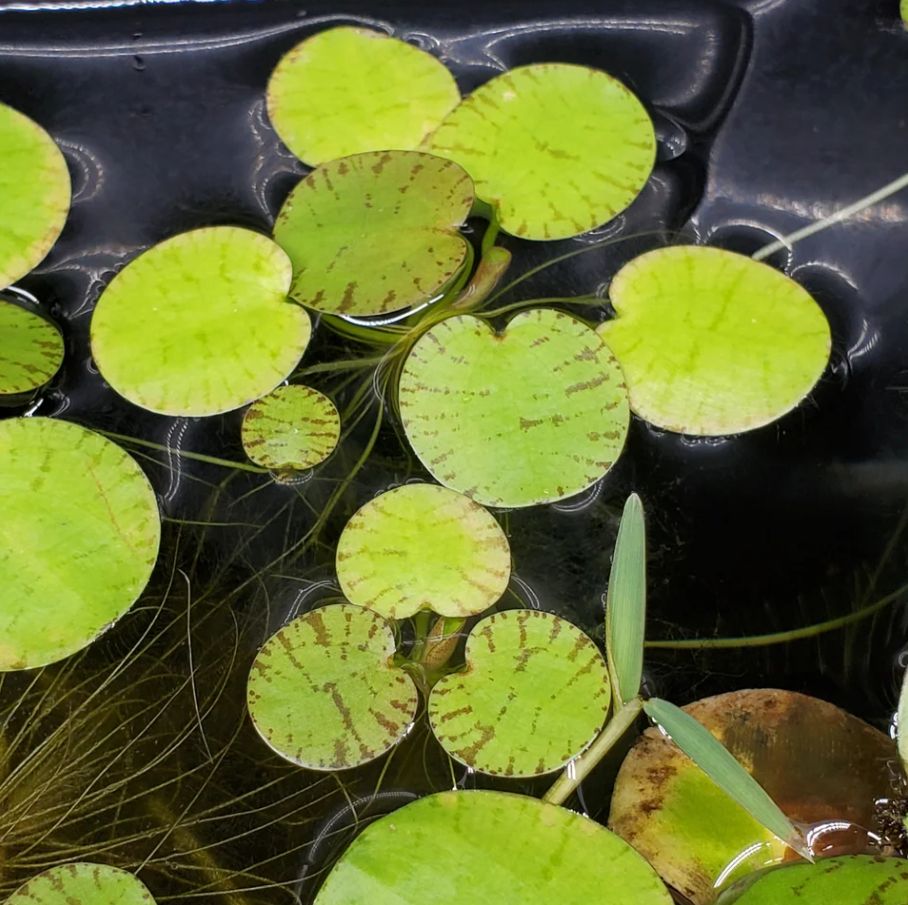
The Frogbit is a freshwater plant with broad leaves and large rosettes. It resembles tiny lily pads and is an alternative to Duckweed in some ways.
The plant partially blocks out light to provide privacy spots for fish. However, this shade cover can prove problematic for other bottom-dwelling plants that need sunlight.
Its long roots provide spots for exploration and foraging and are suitable for tanks with a betta, shrimp, and fish fry.
4. Red Root Floater
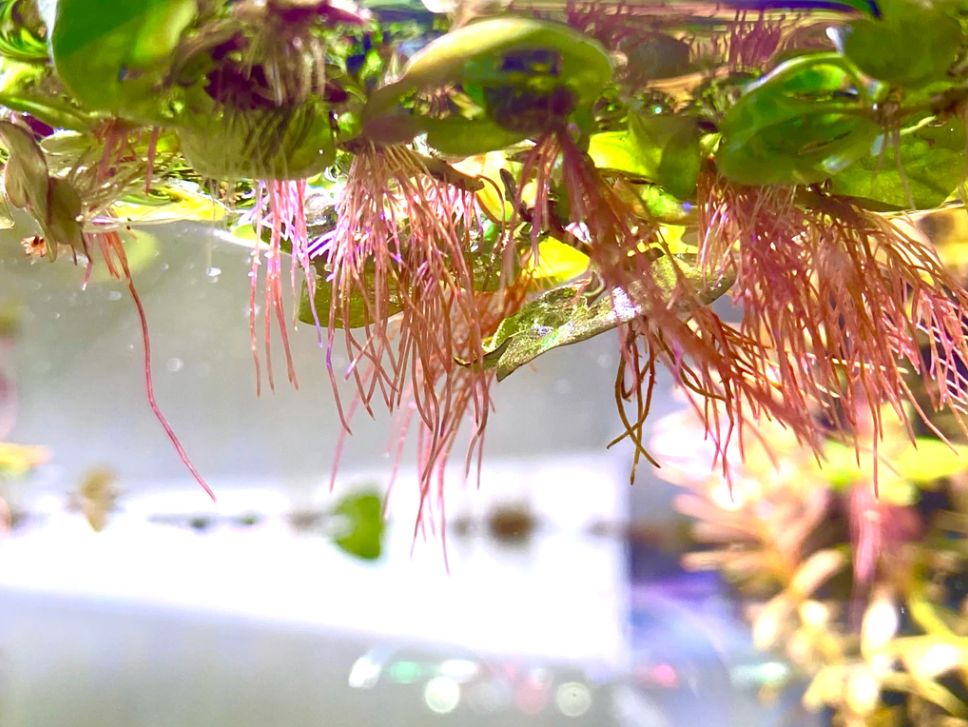
Break the monotony of using green floater plants and switch to red ones. The Red Root Floater turns bright red when exposed to a lot of light, and this is in terms of the leaves, stems, and roots.
The plant is easy to care for and can thrive in different water conditions. If you are a beginner, simply drop this floater plant in your freshwater tank and watch it float around.
The plant is fast-growing, too, and may take over your tank. Therefore, thin the Red Floater occasionally to prevent this.
5. Water Lettuce
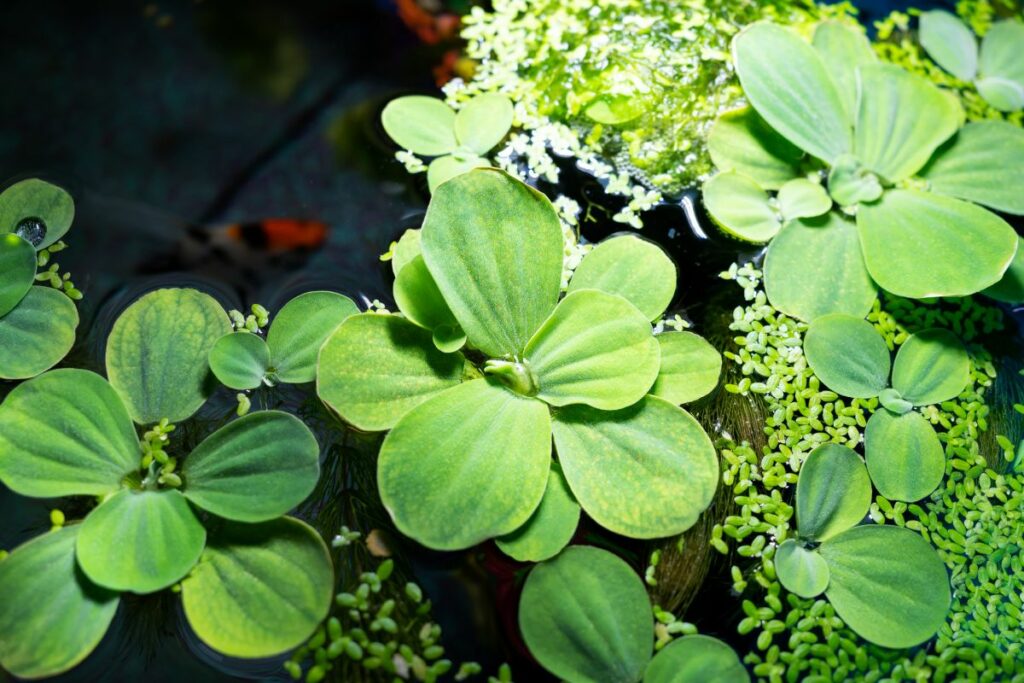
These floater plants are more suitable for large aquariums and ponds. Their large, cabbage-like rosettes can grow to 5+ inches and need space to look attractive.
Water lettuce also acts as a bio-filter by removing waste and toxic substances. It also absorbs nutrients that fuel algae to control its growth.
Unfortunately, water lettuce is illegal in some states.
If it is legal in your state and you choose to buy it, ensure that you control its growth as it can grow massively to block light and gas exchange inside the aquarium.
6. Anacharis
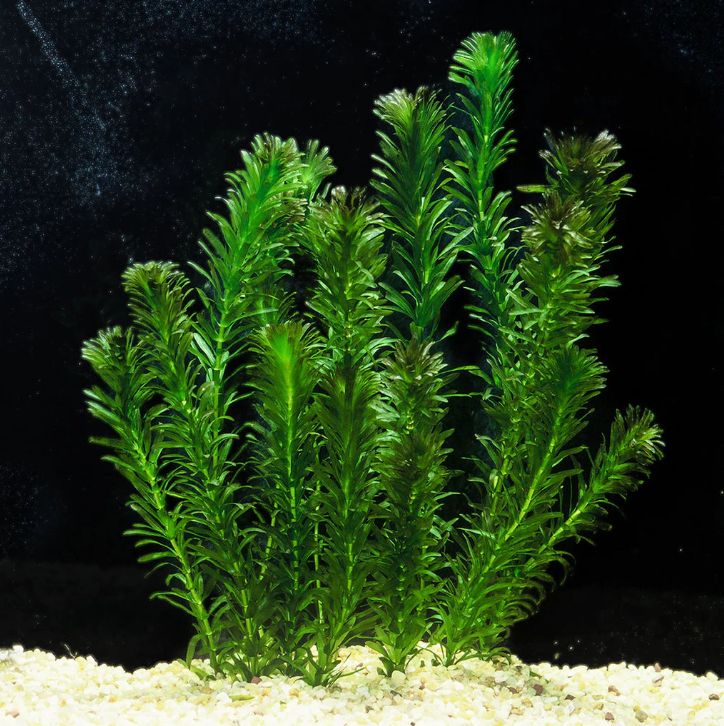
Anacharis is a suitable floating plant for beginner aquarium plant tanks. It not only thrives in various water temperatures, but it also grows quickly. Besides, it is easy to care for as it only requires adequate lighting.
The plant naturally floats in water, but you can tie it to an anchor or grow it on a substrate. Either way, it will provide comfort and security to fish fry, small fish, and invertebrates.
Anacharis helps oxygenate the tank water. In addition, some fish nibble parts of this floating plant to supplement their diet.
7. Water Spangles
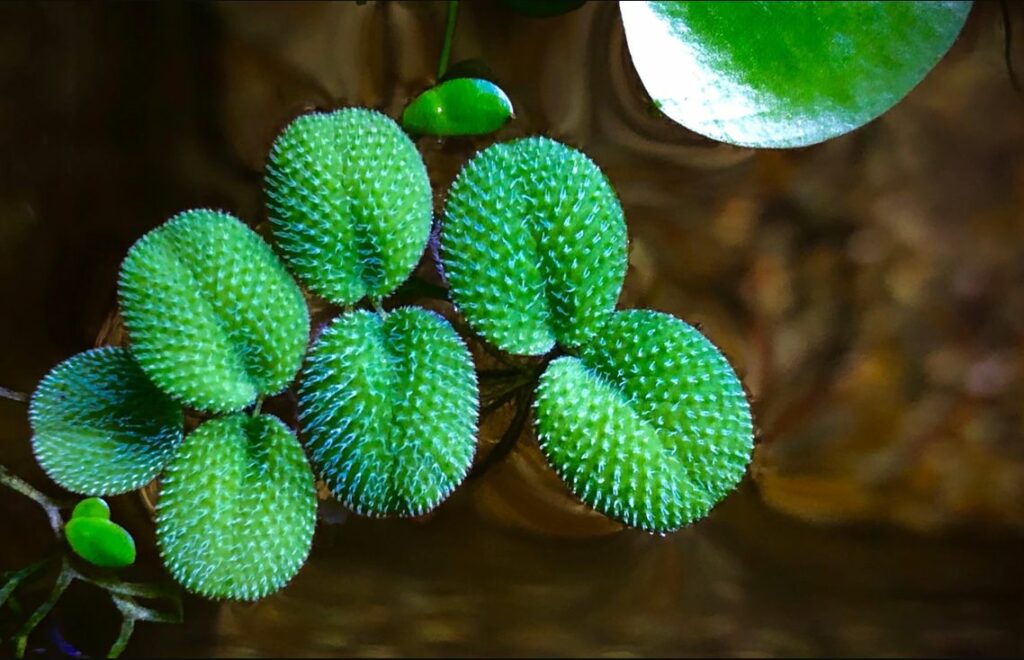
Water spangles look like Frogbit but with longer roots. They thrive in aquariums with slow currents, but other than this, they thrive in different water parameters.
The plant’s long roots absorb nutrients from the water column to maintain a healthy tank. The roots can also limit the fish from swimming through.
Its large leaves cover the tank to provide shelter and refuge for fish fry and other tank mates. But the same cover may mean the deeper plants get little to no sunlight.
8. Hornwort
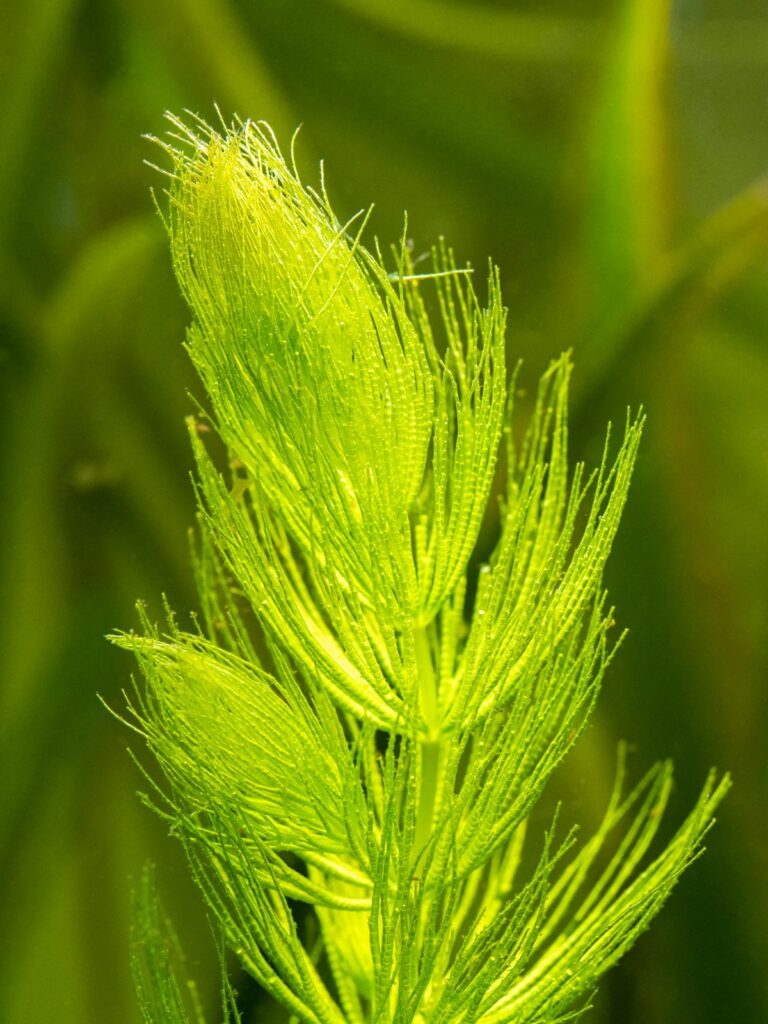
Apart from their beauty, hornworts have a reputation for oxygenating aquarium water. These plants get rid of toxic waste, nitrates, and ammonia to maintain clean and healthy water. What’s more, it neutralizes algae.
Growing this plant is relatively easy since it thrives in different water conditions. You can either have the plant floating feely or plant it on the substrate.
9. Cabomba Caroliniana
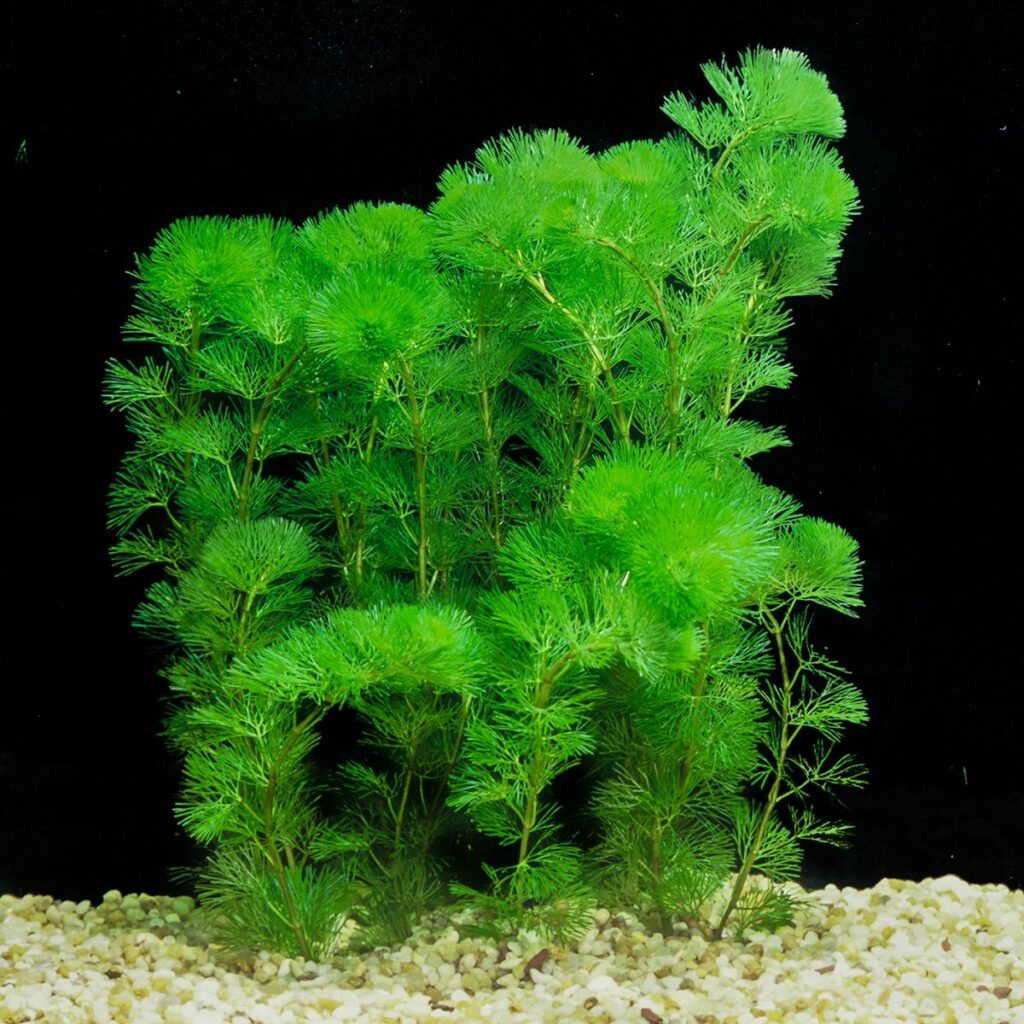
This is a hardy floater aquarium plant that can also be planted or allowed to float freely. It grows fast to make a bushy cover, making it a favorite choice among shrimp and fish fry owners.
The weed facilitates biological filtration. It absorbs excess nutrients from the water column to provide a healthy environment for your fish.
Cabomba comes in either large or small sizes. Regardless, you should only add it to a tank that holds 5 gallons or more.
10. Duckweed Plants
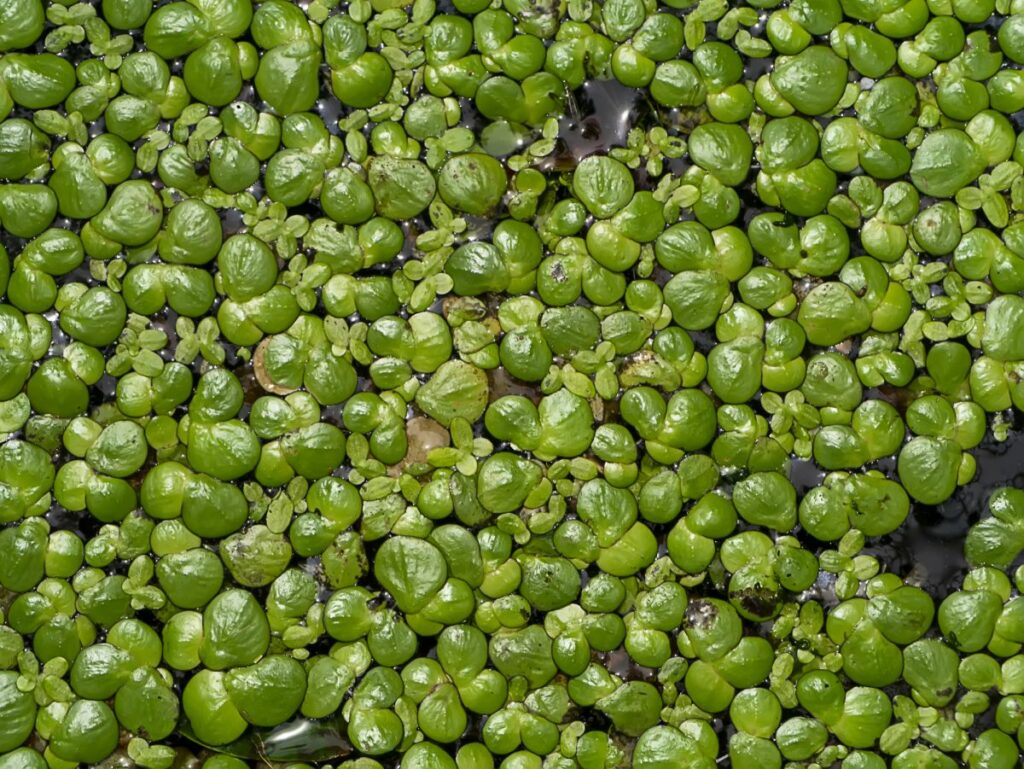
These live plants for fish tanks look neat and cool from above and below the water surface. The leaves are quick to grow and only take weeks to proliferate. In addition, the plants grow in any environment.
Duckweed supplements the fish diet for some surface-dwelling fish. And since it grows fast, there is always plenty of it.
Nevertheless, monitor its growth because an overgrowth can prevent light from reaching other plants or livestock in the tank. Also, once you introduce this floating plant into a tank, it is almost impossible to remove it.
Floating Aquarium Plants: Conclusion
Floater plants are an excellent addition to any aquarium. They maintain stable water parameters by oxygenating the tank and getting rid of harmful waste. Moreover, they provide shelter and comfort as well as foraging grounds to some species.
We hope this guide helps you find the right aquarium aquatic plants.

